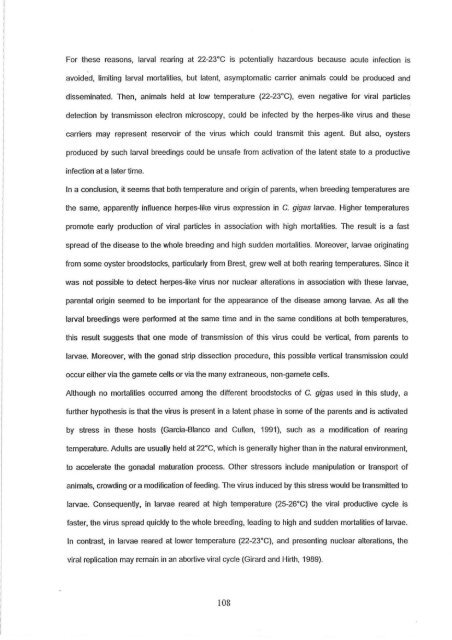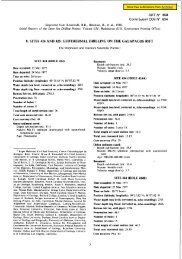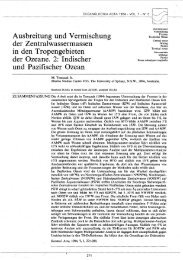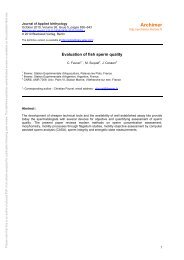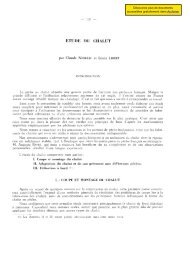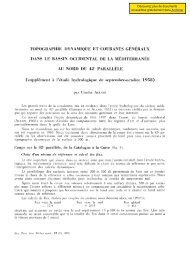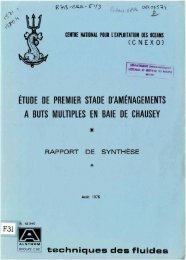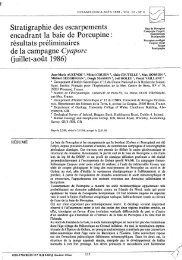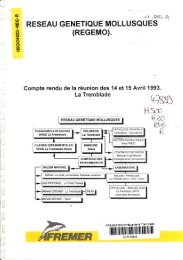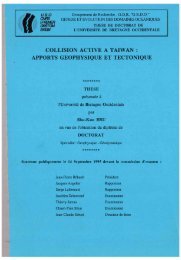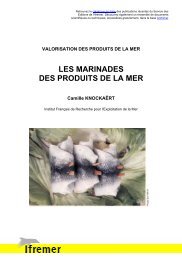Contribution à l'étude de virus de mollusques marins apparentés ...
Contribution à l'étude de virus de mollusques marins apparentés ...
Contribution à l'étude de virus de mollusques marins apparentés ...
Create successful ePaper yourself
Turn your PDF publications into a flip-book with our unique Google optimized e-Paper software.
For these reasons, tarvat rearing at 22-23°C is potentially hazardous because acute infection is<br />
avoi<strong>de</strong>d, limiting larval mortalities, but latent, asymptomatic carrier animais could be produced and<br />
disseminated. Then, animais held at low temperature (22-23°C), even negative for viral particles<br />
<strong>de</strong>tection by transmisson electron microscopy, could be infected by the herpes-like <strong>virus</strong> and these<br />
carriers may represent reservoir of the <strong>virus</strong> which could transmit this agent. But also, oysters<br />
produced by such larval breedings could be unsafe from activation of the latent state to a productive<br />
infection at a later time.<br />
ln a conclusion, it seems that both temperature and origin of parents, when breeding temperatures are<br />
the sa me, apparently influence herpes-like <strong>virus</strong> expression in C. gigas larvae. Higher temperatures<br />
promote earty production of viral particles in association with high mortalities. The result is a fast<br />
spread of the disease to the whole breeding and high sud<strong>de</strong>n mortalities. Moreover, larvae originating<br />
from some oyster broodstocks, particularly trom Brest, grew weil at both rearing temperatures. Since it<br />
was not possible to <strong>de</strong>tect herpes-like <strong>virus</strong> nor nuclear alterations in association with these larvae,<br />
parental origin seemed to be important for the appearance of the disease among larvae. As ail the<br />
larval breedings were performed at the same time and in the sa me conditions at both temperatures,<br />
this result suggests that one mo<strong>de</strong> of transmission of this <strong>virus</strong> cou Id be vertical, from parents to<br />
larvae. Moreover, with the gonad strip dissection procedure, this possible vertical transmission could<br />
occur either via the gamete cells or via the many extraneous, non-gamete cells.<br />
Although no mortalities occurred among the different broodstocks of C. gigas used in this study, a<br />
further hypothesis is that the <strong>virus</strong> is present in a latent phase in some of the parents and is activated<br />
by stress in these hosts (Garcia-Blanco and Cu lien, 1991), such as a modification of rearing<br />
temperature. Adults are usually held at 22°C, which is generally higher than in the natural environ ment,<br />
to accelerate the gonadal maturation process. Other stressors inclu<strong>de</strong> manipulation or transport of<br />
animais, crowding or a modification of feeding. The <strong>virus</strong> induced by this stress would be transmitled to<br />
larvae. Consequently, in larvae reared at high temperature (25-26°C) the viral productive cycle is<br />
faster, the <strong>virus</strong> spread quickly to the whole breeding, leading to high and sud <strong>de</strong>n mortalities of larvae.<br />
ln contrast, in larvae reared at lower temperature (22-23°C), and presenting nuclear alterations, the<br />
viral repli cation may rcmain in an abortive viral cycle (Girard and Hirth, 1989).<br />
108


